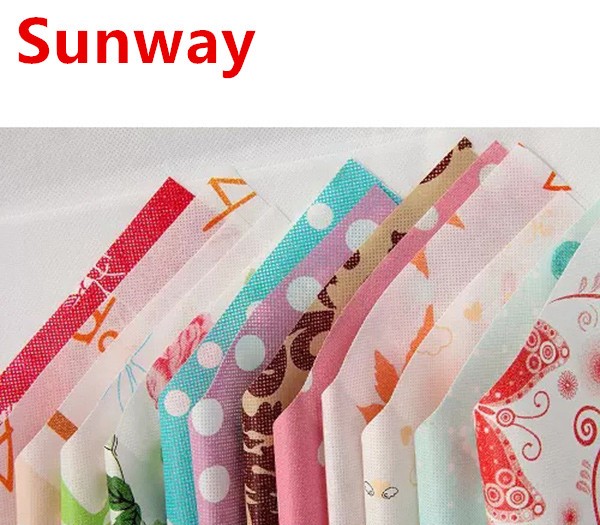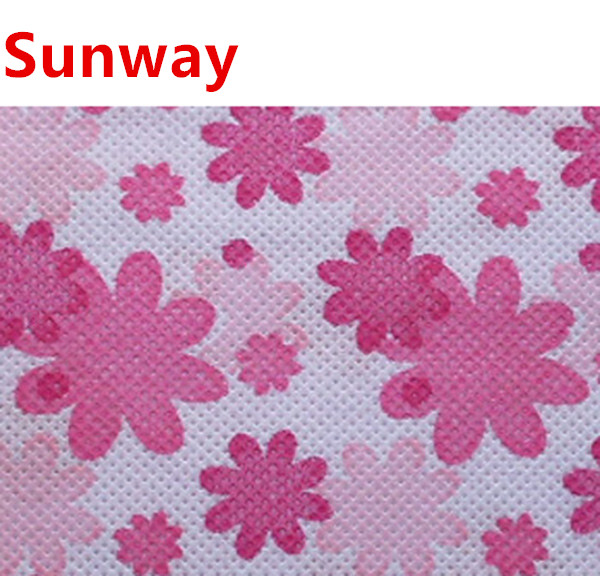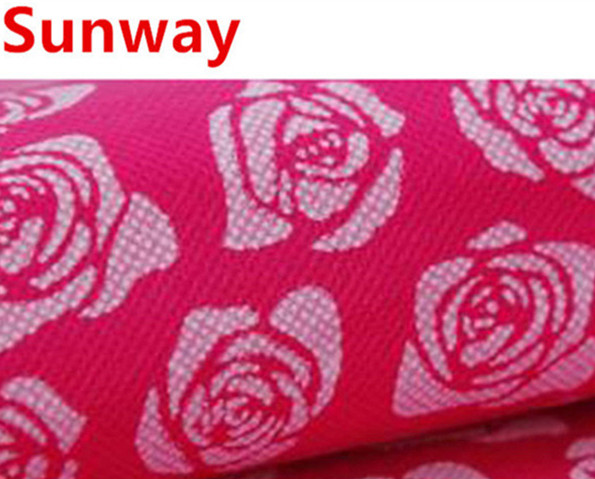Carbonless copy paper is also known as pressure sensitive recording paper. It is a commonly used printing material for multi-reports, receipts, computer terminals, etc. It is easy to use and fast, and is very popular with users. It is widely used in aviation, postal, telecommunications, commerce and trade. Other service industries. Because the carbonless paper is lighter and thinner, and the stiffness is relatively poor, when the moisture content of the base paper is not properly controlled, the edge of the paper is likely to curl or wavy after unpacking. In this way, when printing with an offset press, the edge of the paper is easy to wrinkle Not only does the printing quality of the product do not meet the user's requirements, but it also causes certain obstacles to the normal printing of the machine.
1. Analysis of printing wrinkle failure
Our company uses the J2205 folio two-color offset printing machine to print up-link and mid-link carbonless paper (large-size four-open 59.5 × 44.3cm specifications), but when printing to 45 grams of yellow down-link carbonless paper, the paper Frequent wrinkling failures on both sides caused quality defects such as table layout deformation and missing characters and strokes, which also affected the accuracy of sleeve products and did not meet the quality requirements for use. After this problem occurs, although the operator has successively taken down the printing pressure, checked the flatness and evenness of the blanket, and repeatedly adjusted the pressure of the roller's teeth, the printing wrinkles cannot be eliminated. The semi-finished base paper after cutting cannot be returned or replaced. The customer is in a hurry to ask for the goods. The situation is tricky and I do n’t know what to do. In this regard, the author observed and inspected on-site that the wrinkled carbon-free paper is prone to appear after this combined printing, and the edges are curled and deformed. In addition, the left and right corners of the paper do not correspond to the roller gritted, so the printing process With the rapid rotation of the roller, the two sides of the paper fall backwards because they are not bitten by the teeth, so that the left and right sides of the paper and the middle paper edge do not maintain straight and synchronous scrolling. Therefore, it is easy to make The uneven paper faces a number of wrinkle marks on both sides of the trailing edge. After analyzing the cause, the author immediately flashed an idea to solve the problem. Add a cardboard liner to the left and right sides of the printed sheet. Tighten the paper to achieve the purpose of eliminating printing wrinkles.
2. Using the "pad method" to quickly eliminate wrinkles in printing
The so-called "pad-adding method" refers to padding two cardboard strips of appropriate thickness and width at appropriate positions on the imprint cylinder corresponding to both sides of the printed sheet. The specification of the printed sheet is 44.3 × 59.5cm. In order to eliminate the phenomenon of printing wrinkle quality, the author tightened the whiteboard paper strips of appropriate width and thickness on both sides of the printed sheet (in the direction of the 59.5cm specification). The paper surface during imprinting avoids the wrinkling of the printed sheet faster and better, which not only realizes normal production, but also ensures the quality of the product. The specific method is: take a piece of 250g thick whiteboard paper, cut out two cardboards with a width of 5mm and a length of 430mm, and then use 5 × 430mm double-sided tape to align one side of the two cardboards respectively. And peel off a layer of wax paper on the surface, and then put a large sheet of paper on the cardboard, press the normal printing position of the machine to let the paper enter the impression cylinder, and jog the machine to the appropriate position. Paste one by one on the two sides of the impression cylinder and correspond to the left and right sides of the printed sheet. When pasting, the edges of the two 430mm long cardboards are about 13mm away from the corresponding bite edge of the printed sheet, which is the length of the two cardboard strips The edge can be aligned with the trailing end of the printed sheet, so that the paper on the left and right sides of the printed sheet first touches the surface of the two cardboard strips when the roller is pressed, and then the hard cardboard strip forces the blanket to sink, making the loose paper surface Tightening in the stretch deformation, that is to say, the machine is pressed against the edges of the left and right sides of the paper in the stamping state, and then plays the role of tensioning the paper surface, thereby better eliminating the paper printing wrinkle phenomenon . It is worth mentioning here that for the thin paper with uneven printing surface, use cardboard strip pads to stick to both sides of the impression cylinder (corresponding to the two sides of the printed sheet). The old blanket should be replaced with the old one to avoid pressing the good blanket out of the two. The traces come, causing two light traces when printing the flat screen or the solid version.
In addition, after this batch of paper with poor flatness is printed, the two cardboards on the impression cylinder should be torn off, and the glue remaining on the cylinder should be cleaned with gasoline to avoid the appearance of a good rubber stamp. Deformation phenomenon. If the wavy deformation of the edge of the paper is particularly strong, you can increase the thickness of the cardboard strip (for example, use an extra layer of whiteboard paper), and then cut the corresponding area and thickness of the backing paper on the back of the blanket corresponding to the cardboard strip. In this way, by using the "hanging" state on both sides of the blanket during imprinting, more expansion and contraction space can be formed, so that the tension of the printed sheet during imprinting can be further increased. The printed sheet is not prone to cracking, and the damage to the blanket is also light, which can effectively eliminate the wrinkling of paper printing.
3. Technical tips to reduce or prevent printing wrinkles
The production process practice shows that uneven printed sheets are the main cause of wrinkles in printing. However, poor machine is also easy to induce printing wrinkle failures, such as defects in the structural characteristics, position, pressure of the teeth, and the characteristics of the liner, the flatness of the cylinder and the printing pressure. Wrinkle ills. Therefore, from the technical point of view of preventing wrinkling of printing, during the process of imprinting the printed sheet held by the bite of the paper, the printed sheet should not be subject to a small amount of slippage or deformation after the embossing force, especially bite The two paper corners of the edge of the paper, if they fall backwards, it is very easy to produce printing wrinkles. Therefore, the paper corners on the left and right (width) sides of the printed sheet during printing should correspond to the bite teeth, especially It is printing thin paper, and the printed sheet is not bitten by the paper bite, and the probability of printing wrinkle is higher. Secondly, when positioning the printed sheet, try to make the bite teeth bite the paper edge as much as possible, and the pressure of each bite tooth should be adjusted enough and kept even. Third, the lining should be kept flat and tight, and the coefficient of compression deformation should be reduced as much as possible. Fourth, under the premise of maintaining the appropriate resolution of the printing plate, printing is carried out with the lightest possible printing pressure. Through the control of these technical measures, the occurrence of printing wrinkling failures can be minimized and avoided.
After making reasonable adjustments to the machine, the thin paper with severe deformation of the printing paper still shows wrinkling failures. Only the cardboard strips can be used to paste the two sides of the impression cylinder to achieve the tightness of the paper surface during printing to achieve elimination The purpose of printing wrinkles. Although this approach violates the "three-level" theory of printing, successful practice has shown the feasibility and practicality of this method. This is because the blanket is very elastic, and the two cardboard strips that are slightly higher than the surface of the impression cylinder force the partially slack paper to be tensioned on both sides by imprinting. This does not give printing pressure or layout. Registration and ink layer transfer cause too much adverse effects. Since the author established this method more than 10 years ago, the small offset printing test was successful, and then the J2108B folio monochrome offset printing machine was tested for wrinkling failures, and the same good solution was achieved, which greatly reduced the paper. The waste phenomenon improves the pass rate of products. This time, our company used the J2205 folio two-color offset printing machine to print carbonless paper. After the first obvious wrinkling failure, the author applied this solution to quickly eliminate the wrinkling failure of paper printing, and also achieved a good effect. The problem of wrinkle-free printing on carbon-free paper is satisfactory.
Sunway is focused on the manufacture and sales of Printed Non Woven Fabric is more than 20 years, come here that you can find all kinds of Non Woven Fabric Products which you want. It has many advantages , just like moisture-proof, flexible, very light, non-combustion-supporting , heat preservation , easy to decompose, non-toxic and non-irritating, rich color, low price and recyclable. Meanwhile the size, thickness and colors are based on your requirements, for the related products which you can refer to our keywords of PP Non Woven Fabric and Printed Non Woven Fabric, we can provide the best quality and price for you, welcome to contact us , thanks !



Printed Non Woven Fabric
Printed Non Woven Fabric,Roll Printed Non Woven Fabric,Printing Laminated Non Woven Fabric,Industry Printed Non Woven Fabric
Shenzhen Sunway Packaging Material Co., Ltd , https://www.sunwaypack.com